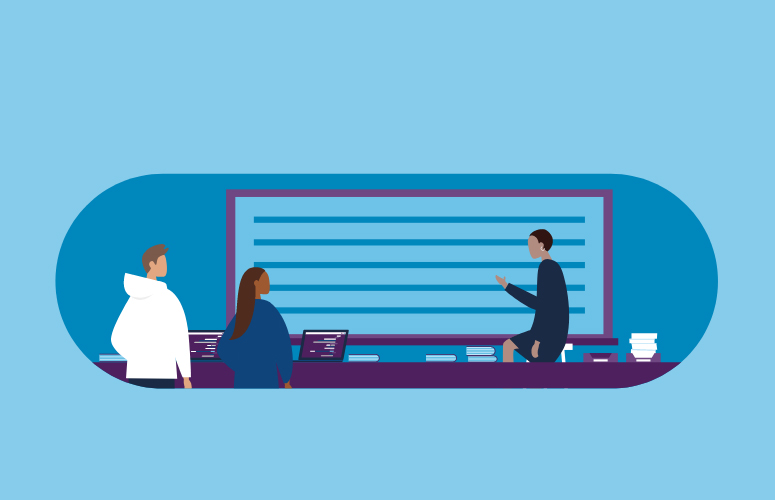Incorporating I&E Into the Student Experience
It may seem daunting to think about building innovation and entrepreneurship into the physics curriculum. But there are important considerations that make this not only possible but easier than it seems. The goal of education is to achieve desired outcomes for students over the course of their education—and those outcomes can be achieved in different ways at different times and not all in one place. For example, students can achieve certain outcomes by successfully completing formal classes, some outcomes are achieved by completing internships or research experiences, and other outcomes can be achieved by attending conferences or other activities or offerings.
The optimal process is to identify and utilize the resources and assets that are available across your campus and in your community so that each student has the experiences over the course of their education to achieve those desired outcomes, which may or may not have to come from the physics department itself (Secor, 2017). Some of the skills, knowledge, and attitudes can be well delivered to students by enrolling them in courses from across your campus through appropriate advising. Others can be delivered through extracurricular experiences, as we will discuss below. Most importantly, there are ways to connect the physics you are teaching to innovation and entrepreneurship learning outcomes that do not in any way dilute the physics itself. These methods adapt how physics is taught to ensure that the core physics skills that make graduates so successful are not depleted, but enhanced. These types of experiences also provide students opportunities to apply the physics they learn, which can help them to achieve higher levels of learning. Encouraging students to utilize and apply the physics they learn to real-world situations helps students appreciate the relevance of what they are learning, which also promotes long-term learning.
This section gives you example tools and methods for incorporating I&E education into the experience of your students. As the PIPELINE team developed these approaches, a research study on faculty attitudes was conducted to identify the barriers you feel or may encounter in doing so and how to overcome them. Some of the outcomes of that study are noteworthy and are summarized in FIGURE 7.
Faculty views of PIE
| Response | Are you aware of PIE? |
|---|---|
| Yes | 53% |
| Not sure | 35% |
| No | 15% |
Themes from faculty survey regarding implementation of PIE
- Lack of knowledge about nonacademic careers limits faculty’s ability to develop and
deliver PIE-related curricula. - Lack of recognition for faculty who integrate PIE and career-focused elements into their teaching reduced motivation.
- Lack of interest among colleagues and, more broadly, their departments left PIE champions feeling isolated.
- The physics major is already full, leaving little room for new topics, such as PIE.
- Resources were lacking, including connections to alumni who work in private sector, time and funding to develop and implement PIE, and curricular materials.
For example, a significant fraction of faculty express that preparing students for nonacademic careers has merit, but when asked how well they’re doing it, one-half think they’re doing it well, and the other half think they’re doing it poorly. Many faculty report that they aren’t capable of preparing students because of their own lack of knowledge about nonacademic careers and that lack of interest in their departments and the dearth of recognition for I&E education are impediments to those who wish to take this on. It is important for faculty to recognize that there are experts on campus who can help
them overcome these barriers. For example, scheduling time to meet with colleagues working in the career services or the alumni office may be helpful for understanding the types of positions physics graduates secure after graduation. Making connections with alumni can provide faculty insight into the skills that physics graduates use as well as the areas in which they wish they had more education. Most colleges and universities already collect information from graduates. Physics faculty can tap into this resource. And if the input from industry discussed earlier is a guide, physics departments really aren’t successfully preparing their students for nonacademic employment. Addressing these issues is critical for the survival of programs and departments and for recruiting and placing students in the 21st century landscape. Section 4 of this report will give you tools to overcome these issues as you pursue PIE education outcomes for your students.
